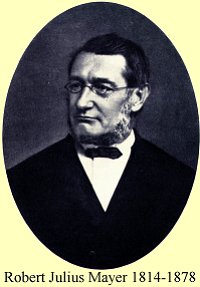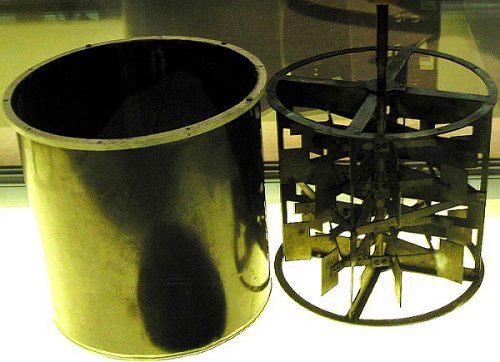Tyndall, Mayer, & Forbearance
Today, a nineteenth-century message for our times. The University of Houston's College of Engineering presents this series about the machines that make our civilization run, and the people whose ingenuity created them.
I've been reading the British physicist John Tyndall once more. As always, I learn something new from him. This time he writes with great intensity about the German doctor Robert Mayer. Yet, he finds meaning that goes beyond his subject.
In 1840, a young Mayer had attended feverish sailors in the tropics. He'd noticed that, when he let blood, it flowed far redder than it did in Germany. They were burning less oxygen. Five years later he'd pursued the implications of that stray fact until he'd formulated a whole theory of energy. It included the first quantitative statement of the conservation of energy.
 Mayer's work drew fire that ranged from disagreement to savage ridicule. During that time, the young British experimenter, James Joule, was systematically measuring the conversion of work to heat. Both came to the same truth of things, but each by a different route. In the end, a new science of thermodynamics was built upon their work. Joule, however, wrote that Mayer's assumptions could only be justified after Joule had made his measurements.
Mayer's work drew fire that ranged from disagreement to savage ridicule. During that time, the young British experimenter, James Joule, was systematically measuring the conversion of work to heat. Both came to the same truth of things, but each by a different route. In the end, a new science of thermodynamics was built upon their work. Joule, however, wrote that Mayer's assumptions could only be justified after Joule had made his measurements.
Mayer was brushed aside and Joule was honored. Mayer had made a vast mental and emotional investment. He couldn't weather the as-sault and, during this time, three of his infant children died.
The last straw broke in 1850. A newspaper article by a young physics instructor ridiculed Mayer and said that energy conservation was a joke. Soon after, during a night of fretting insomnia, Mayer leapt from his bedroom window and barely survived the fall. The mental damage was now spiraling out of control.
Mayer was committed to two years in mental institutions. Only back at home did he gradually recover. In 1858 a famous chemist credited his contributions, but he also said that Mayer had died by then. He had not, but maybe a wide belief in his death saved him. Sometimes it's easier to speak well of the dead than the living.
Finally Tyndall gave the living Mayer his full due. He plumbed Mayer's early paper and found an array of correct and insightful conclusions, not just about energy conservation, but about how nature managed energy in astronomical and living systems. In 1863, a very grateful Mayer wrote to Tyndall,
Your kindness impresses me all the more [since I have], for many years, been forced to habituate myself to a precisely opposite ... treatment.
We've all taken sides in fights that should never have occurred to begin with. Tyndall gently chides us all when he writes,
In the firmament of science Mayer and Joule constitute a double star, the light of each being in a certain sense complementary to that of the other.
Both Joule and Mayer were outsiders, brilliant amateurs. But it took Tyndall to remind us that they were coworkers in arriving at the terribly important fact of energy conservation. He gently pointed up the folly of turning such a glorious thing into a priority dispute.
I'm John Lienhard, at the University of Houston, where we're interested in the way inventive minds work.
R. B. Lindsay, Julius Robert Mayer: Prophet of Energy. (New York: Pergamon Press, 1973). See also, R. S. Turner, Mayer, Julius Robert. Dictionary of Scientific Biography. Vol. IX (C.C. Gilespie, ed.) (Chas. Scribner's Sons, 1974).
The photo of Mayer is a copy of a widely circulated image, taken from Das Leben fur die Idee, (Berlin: S. Fischer Verlag, 1935).
See D. S. Cardwell, James Joule: A Biography. (Manchester: Manchester University Press, 1989), or L. Rosenfeld, Joule, James Prescott. Dictionary of Scientific Biography. Vol. XIII (C.C. Gilespie, ed.) (Chas. Scribner's Sons, 1973).

Joule's apparatus for stirring water in the container on the left, using the paddles on the right. (London Science Museum. Photo by John Lienhard)